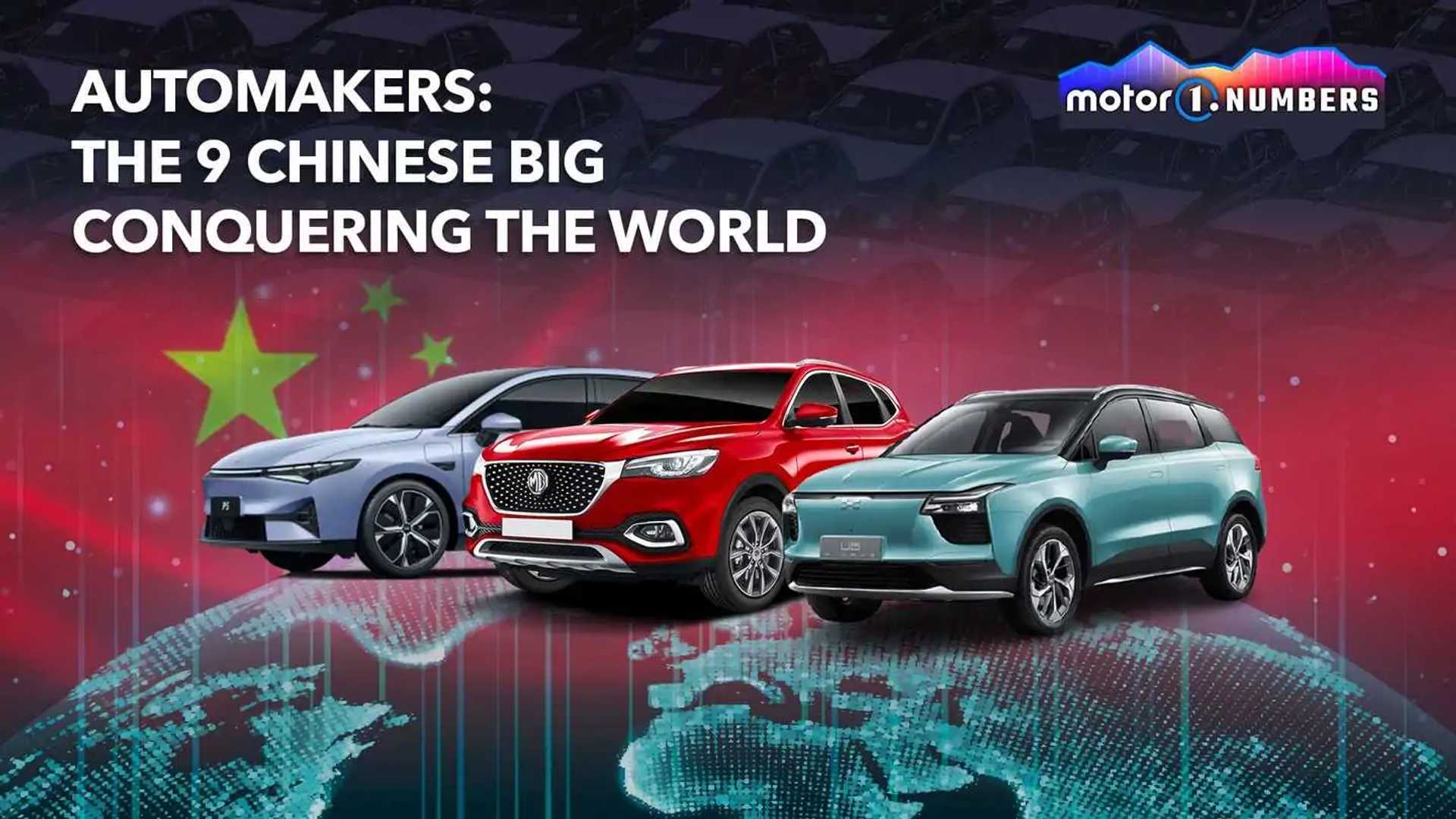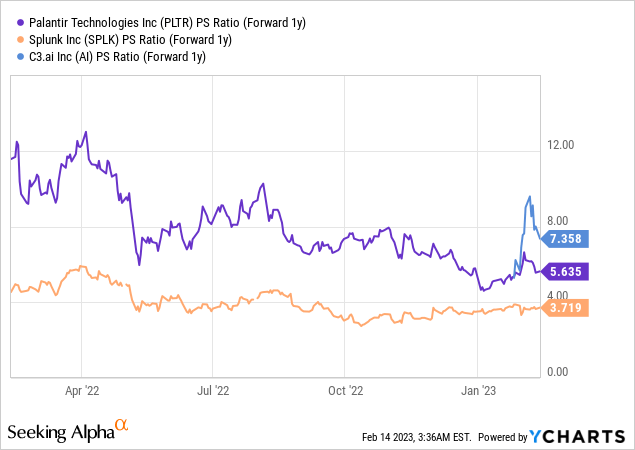The Complexities Of The Chinese Auto Market: Case Studies Of BMW And Porsche

Table of Contents
The Unique Characteristics of the Chinese Auto Market
The Chinese auto market isn't a monolith; it's a diverse and rapidly evolving landscape. Success requires a deep understanding of its unique characteristics.
Diverse Consumer Preferences
Consumer preferences within the Chinese auto market vary significantly depending on numerous factors:
- Regional Variations: Urban consumers in coastal cities like Shanghai and Beijing often prioritize luxury brands and advanced technologies, while rural consumers in inland provinces may focus more on practicality, fuel efficiency, and affordability. This necessitates regionally-tailored marketing and product offerings.
- Electric Vehicle (EV) Boom: The Chinese government's strong push for New Energy Vehicles (NEVs), including electric and hybrid cars, has fueled explosive growth in this sector. Understanding this trend is paramount for any automaker.
- Brand Prestige: Brand prestige and status symbols play a significant role in purchase decisions, particularly within the luxury car market in China. Consumers often see car ownership as a reflection of their social standing.
- Social Media Influence: Online reviews, social media platforms like WeChat, and KOL (Key Opinion Leader) endorsements heavily influence purchasing decisions. A strong online presence and positive digital reputation are crucial.
- Feature Preferences: Chinese consumers often have specific preferences regarding features and technologies. Understanding these nuanced preferences is crucial for product development and marketing. For example, features like advanced driver-assistance systems (ADAS) and large infotainment screens are highly valued.
Government Regulations and Policies
Navigating the regulatory landscape is a significant challenge in the Chinese auto market. Key factors include:
- Stringent Emission Standards: China has implemented increasingly stringent emission standards, pushing automakers to develop and produce more environmentally friendly vehicles. This has driven innovation in NEV technology.
- Import Tariffs and Taxes: Import tariffs and taxes significantly impact pricing strategies for foreign automakers. Local production often becomes necessary to remain competitive.
- Localization Requirements: The Chinese government encourages localization through joint ventures and local production, requiring foreign automakers to collaborate with domestic partners.
- Government Incentives and Subsidies: Subsidies and tax breaks are offered for specific vehicle types, particularly NEVs, influencing market dynamics and investment decisions.
- Dynamic Regulatory Landscape: The regulatory environment is constantly evolving, requiring continuous monitoring and adaptation to remain compliant.
BMW's Strategy in the Chinese Market
BMW's success in China is a testament to its strategic approach to localization and marketing.
Localization and Production
BMW has prioritized local production to meet the high demand and reduce costs.
- Extensive Local Production: BMW has established several production facilities within China, significantly reducing import costs and lead times.
- Tailored Models: BMW offers models and features specifically tailored to Chinese consumer preferences, including longer wheelbases for some models to cater to rear-seat passengers.
- Local Partnerships: Collaborations with local suppliers and distributors have strengthened its supply chain and distribution network.
- Regulatory Navigation: While facing challenges, BMW has effectively navigated the complex regulatory landscape through strategic partnerships and compliance efforts.
Marketing and Branding
BMW’s marketing strategy reflects a deep understanding of the Chinese market.
- Targeted Campaigns: Marketing campaigns are meticulously tailored to resonate with local cultural values and preferences.
- Digital Marketing: BMW leverages digital channels, including social media and online advertising, to reach its target audience.
- Brand Loyalty: Building strong brand loyalty and customer relationships is central to BMW's strategy, emphasizing customer service and brand experiences.
- Adapting to Change: Continuously adapting its marketing strategies to reflect evolving consumer preferences is critical to maintain its market share.
Porsche's Strategy in the Chinese Market
Porsche's strategy emphasizes luxury, exclusivity, and digital engagement.
Focus on Luxury and Exclusivity
Porsche maintains its premium brand image, appealing to affluent consumers.
- Premium Positioning: Porsche sustains a premium pricing strategy, maintaining its image as a symbol of luxury and success.
- High-Net-Worth Individuals: Porsche targets high-net-worth individuals and aspirational consumers who view the brand as a status symbol.
- Luxury Collaborations: Strategic collaborations with other luxury brands enhance its image and appeal to a discerning clientele.
Digital Engagement and Customer Experience
Porsche invests heavily in digital channels to engage with its customers.
- Online Platforms: Porsche utilizes online platforms and digital marketing initiatives to reach and engage with potential customers.
- Personalized Service: Delivering personalized customer service and creating tailored experiences is crucial to its success.
- Online Community: Building a strong online community and fostering brand advocacy are central to Porsche's digital strategy.
Electrification Strategy
Porsche is actively embracing electrification to meet the growing demand for NEVs.
- EV and Hybrid Models: Introducing electric and hybrid models is essential to comply with stricter emission standards and appeal to environmentally conscious consumers.
- Charging Infrastructure: Investing in charging infrastructure and related technologies ensures convenient ownership and use of electric vehicles.
- NEV Market Adaptation: Porsche's strategy is continuously evolving to adapt to the rapidly changing dynamics of the Chinese NEV market.
Conclusion
The Chinese auto market's complexity is undeniable, demanding a nuanced understanding of consumer behavior, government regulations, and competitive dynamics. BMW and Porsche's experiences illustrate the importance of localization, targeted marketing, and adapting to the evolving preferences of Chinese consumers. Their success, however, is also a testament to the significant rewards that can be reaped by companies willing to invest the time and resources necessary to navigate the unique challenges of this massive market. By studying their strategies – both their successes and their setbacks – businesses can glean valuable insights to inform their own approaches to the Chinese auto market and achieve their own market penetration. Understanding the intricacies of the Chinese auto market is key to success; begin your research today!

Featured Posts
-
 High Potential Episode 13 Unmasking The Actor Playing David
May 09, 2025
High Potential Episode 13 Unmasking The Actor Playing David
May 09, 2025 -
 Anchorages New Openings Candle Studio Alaska Airlines Lounge Korean Bbq And Eye Tooth Restaurant
May 09, 2025
Anchorages New Openings Candle Studio Alaska Airlines Lounge Korean Bbq And Eye Tooth Restaurant
May 09, 2025 -
 Palantir Technologies Pltr Stock Investment Analysis And Buy Recommendation
May 09, 2025
Palantir Technologies Pltr Stock Investment Analysis And Buy Recommendation
May 09, 2025 -
 Is Palantir Stock A Buy Before The May 5th Earnings Announcement
May 09, 2025
Is Palantir Stock A Buy Before The May 5th Earnings Announcement
May 09, 2025 -
 Jazz Cash K Trade Partnership Expanding Stock Market Reach
May 09, 2025
Jazz Cash K Trade Partnership Expanding Stock Market Reach
May 09, 2025
